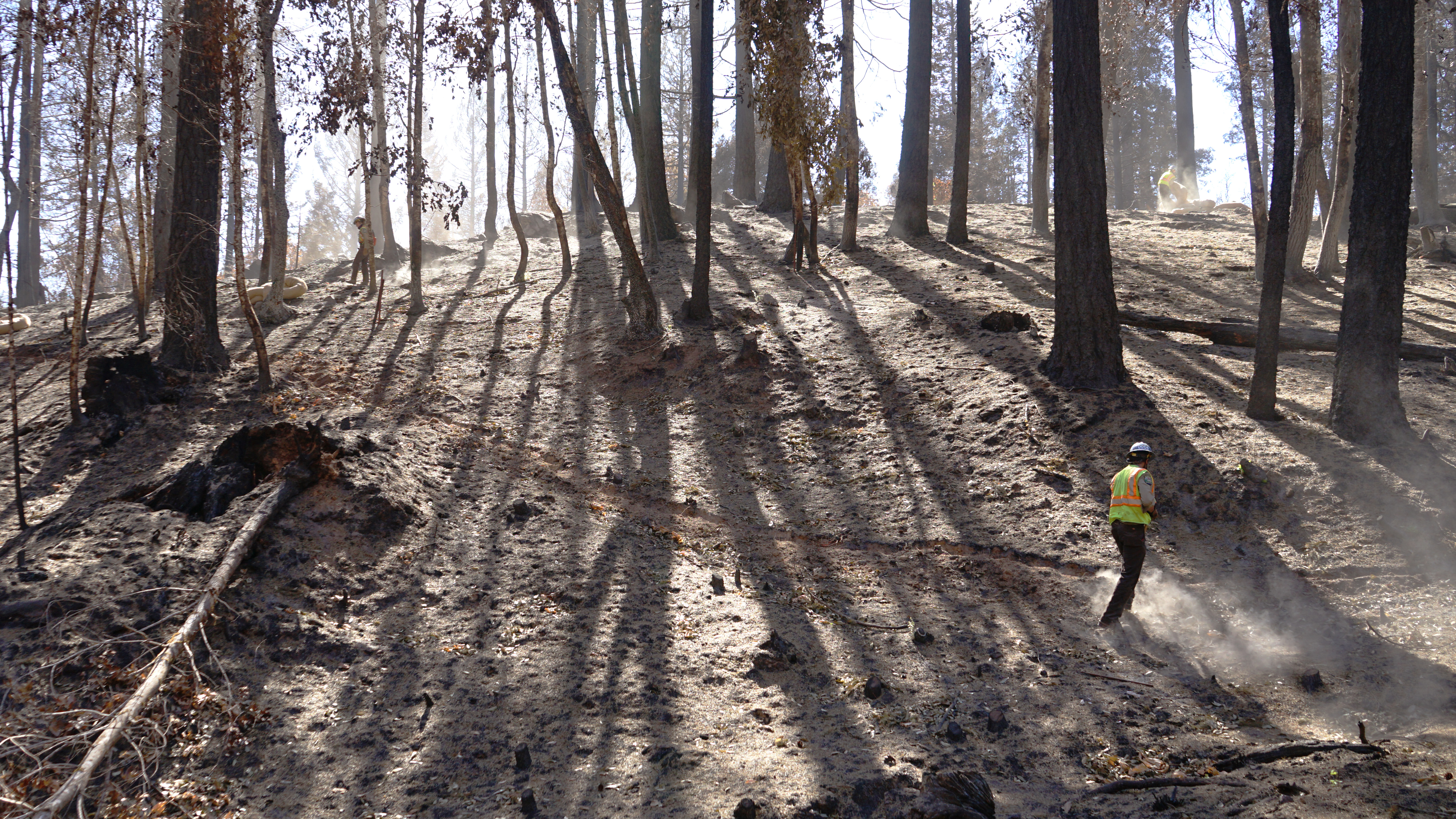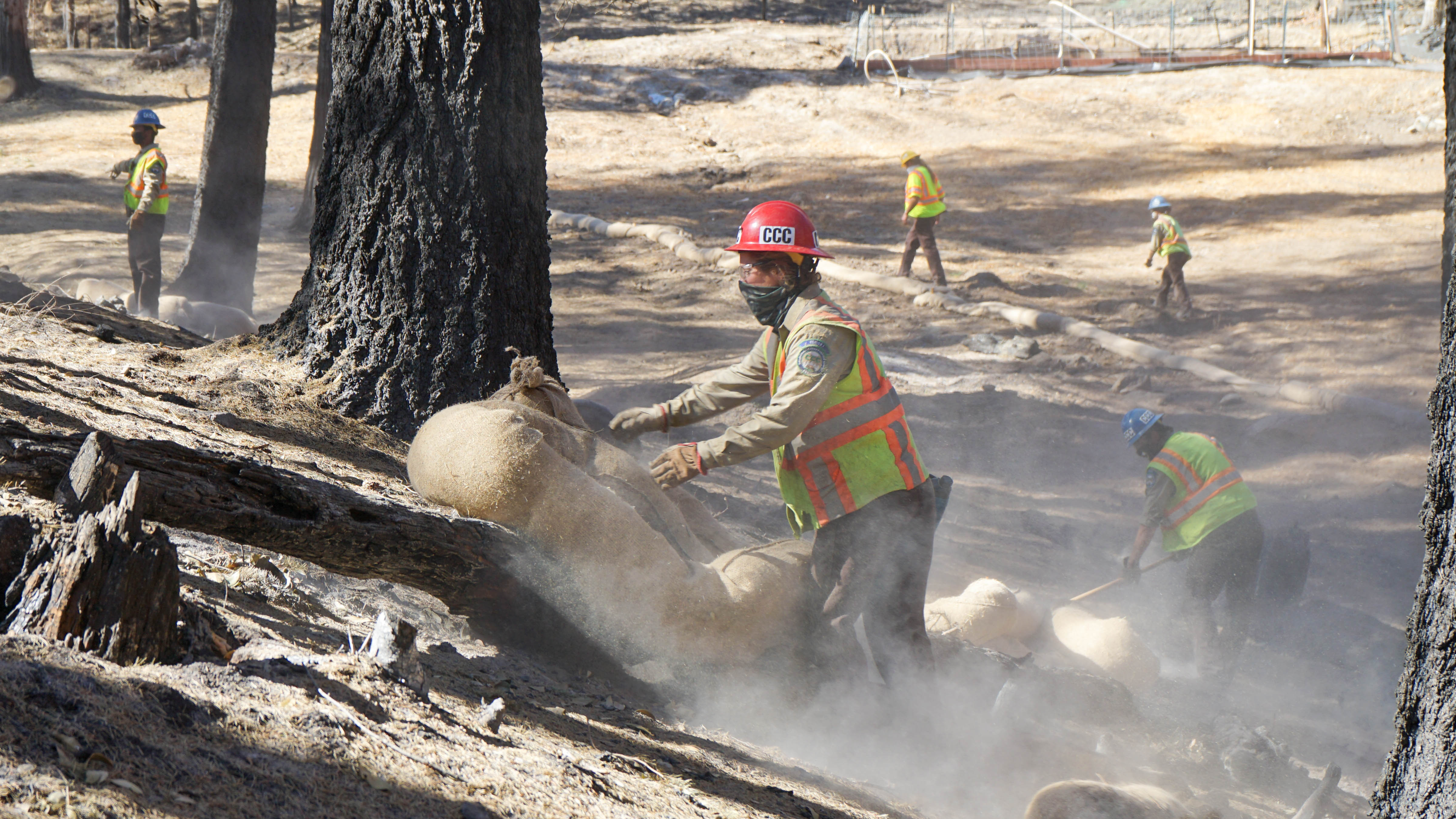Long after the fire trucks have come and gone, the threat to a community impacted by wildfire remains. It’s a less obvious threat than a towering inferno destroying homes and ripping through forests and hillsides. It is a hidden threat that arrives with winter rains and California Conservation Corps Corpsmembers are helping communities stay safe from it—toxic runoff.
“During the rainy seasons when there is a lot of runoff from the hills, which can contain toxic materials from structure damage, we don’t want that getting into the lakes and the rivers destroying more habitat around here,” said Jabe Williams of the CCC Fortuna Center. The Long Beach native is assisting with an erosion control project in Berry Creek around homes destroyed by the North Complex fire, a 318,930-acre blaze that damaged or destroyed more than 2,400 structures and killed 15 people.
“We’re doing erosion control,” Williams explains. “We’re digging trenches and, in the trenches, we’re putting in wattles. They’re basically bags of straw.”
The straw will help keep toxic ash, chemicals, and debris from entering the local watersheds of Butte County. The waters of Berry Creek flow into Lake Oroville and the State Water Project. Fifty-five Corpsmembers started their project work around Lake Madrone. The tiny gated community lost numerous homes to the fires. Using hand tools, Corpsmembers dig shallow trenches and strategically place the wattles inside them before hammering in stakes to hold them in place.
“It’s devastating to see that his can happen and that people lost their homes,” said CCC Tahoe Corpsmember Mandy Madrigal, of Pasadena. “But, it’s a reminder of why I’m in the California Conservation Corps, to be here and actually have our boots on the ground to help is rewarding.”

A CCC Solano Center Corpsmember uses a McLeod to create a three inch trench where straw wattle will be placed above Galen Creek. The creek flows into Lake Madrone, Berry Creek, and then Lake Oroville and the State Water Project.
The Corpsmembers doing this vital fire recovery work are 18 to 25-year-olds. They join the CCC for a year of paid service doing natural resource projects across California. The state program gives these young adults hands-on experience, offers scholarship opportunities, and the chance to finish high school diplomas, among other benefits. For most of the summer, Corpsmembers haven been dedicated to staffing wildfire base camps.
“We were helping a lot of emergency response personnel as they were combatting the fires,” Williams said. “I thought once a fire happened there was nothing you could do in an area to restore it and you just let nature take its course. So, it’s nice to know that we’re here doing something about it and providing support for that.”
The Butte County project is part of a collaboration with the California Governor’s Office of Emergency Services (CalOES), Department of Water Resources, Central Valley Regional Water Quality Control Board, and Butte County Public Works. In the coming weeks and months, the CCC will be assisting other communities and state facilities impacted by recent wildfires across the state.
“It feels good knowing that we’re part of protecting the future, not only this environment but people’s livelihoods,” Williams said.

A CCC Fortuna Center crew leader drops a straw wattle for placement along a hillside above Galen Creek in Berry Creek, CA.
